[ez-toc]
Introduction
This comprehensive guide unveils six remarkable Chinese exercises that may have eluded your knowledge thus far.
Rooted in ancient traditions and backed by substantial empirical evidence, these exercises offer unique benefits for enhancing physical and mental well-being.
By delving into the depths of these lesser-known practices, you will discover a treasure trove of effective techniques to incorporate into your daily routine.
There are several Chinese exercises that can enhance your overall health and well-being. Here are a few examples:
Chinese exercises
Tai Chi
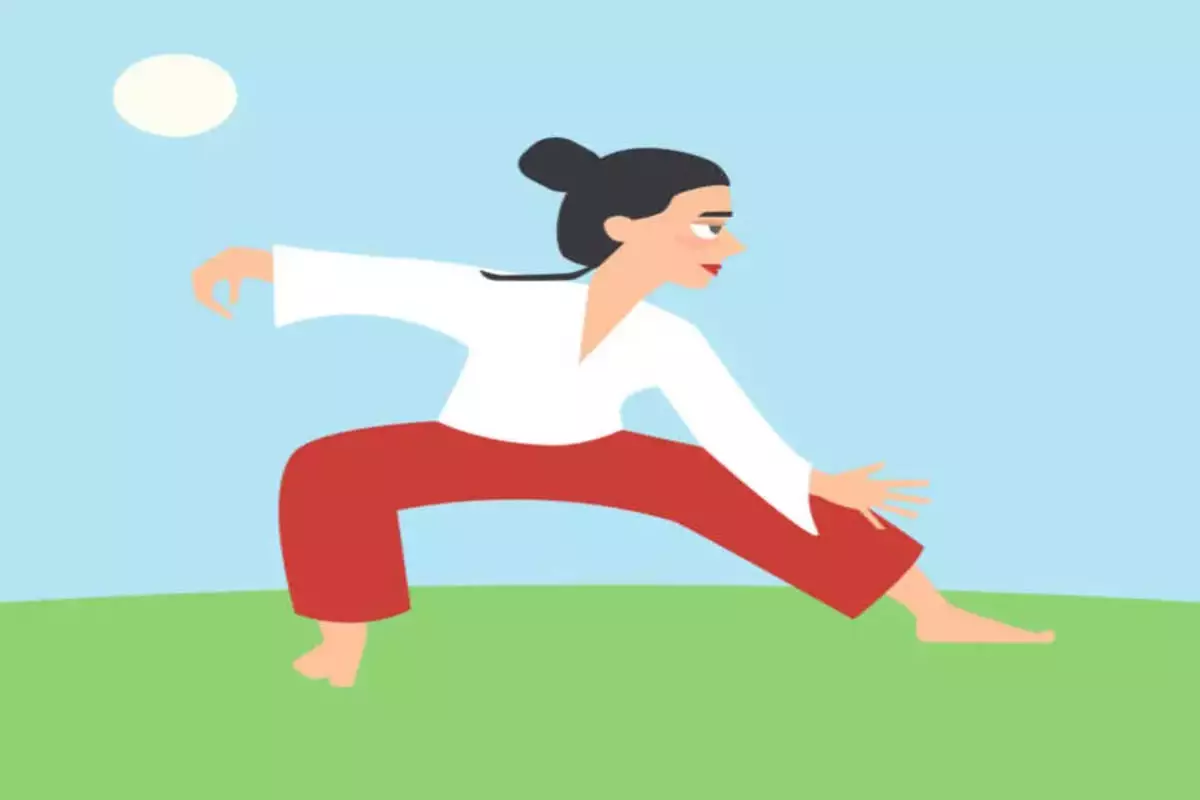
Tai Chi, a graceful and rhythmic martial art, has gained recognition worldwide for its numerous health benefits.
This exercise combines gentle, flowing movements with focused breathing and meditation. By harmonizing the body and mind, Tai Chi cultivates balance, flexibility, and inner peace.
Research suggests that regular practice of Tai Chi can enhance cardiovascular health, strengthen muscles, improve posture, and reduce stress levels.
Procedure
- Find a Qualified Instructor: It’s highly recommended to learn Tai Chi from a qualified instructor, especially if you’re new to the practice. Look for local classes or instructors who can provide personalized guidance and correct your form.
- Choose the Style: There are several styles of Tai Chi, with the most popular being Yang, Chen, Wu, and Sun. Each style has its own unique movements and emphasis. You can choose the style that appeals to you the most.
- Wear Comfortable Clothing: Wear loose, comfortable clothing that allows for a wide range of motion. Tai Chi is typically practiced barefoot or in soft, flexible shoes.
- Find a Suitable Practice Space: Select a quiet, spacious area where you can move freely without obstacles. Practicing outdoors in a park or garden can be particularly enjoyable.
- Warm-Up and Stretch: Begin with some gentle warm-up exercises to loosen your muscles and joints. Stretching can help improve flexibility and reduce the risk of injury.
- Learn the Basic Stance: Tai Chi typically starts with a relaxed, upright posture. Stand with your feet shoulder-width apart, knees slightly bent, and pelvis tucked under. Keep your spine straight and your head lifted as if suspended from above.
- Begin with Basic Movements: Tai Chi consists of a series of flowing movements, or forms, that are linked together. Start with a few basic movements to get the hang of the flow. Your instructor will guide you through these movements, emphasizing proper posture and alignment.
- Focus on Breath Control: Tai Chi places a strong emphasis on deep, diaphragmatic breathing. Inhale slowly through your nose as you initiate a movement and exhale slowly through your mouth as you complete it. Coordinate your breath with your movements.
- Practice Regularly: Consistency is key to mastering Tai Chi. Try to practice regularly, even if it’s just for a few minutes each day. Over time, you will improve your balance, coordination, and relaxation.
- Be Mindful and Relax: Tai Chi is not about force or tension; it’s about relaxation and mindfulness. Focus on being present in the moment, paying attention to your body.
Qigong
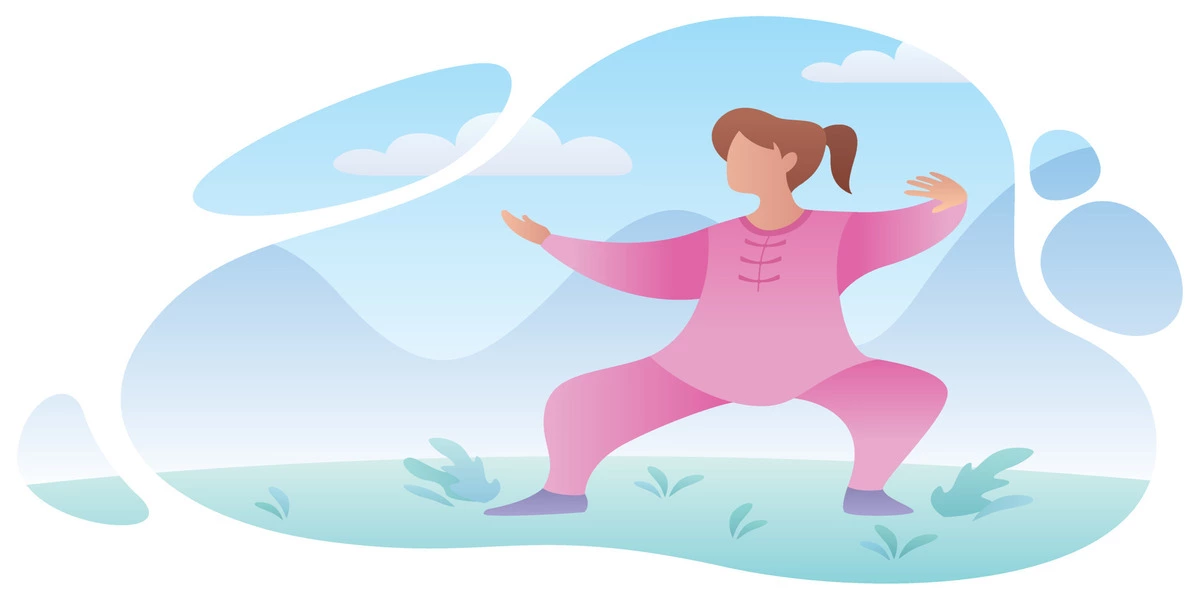
Qigong, an ancient Chinese practice, centers around aligning breath, movement, and awareness.
With its origins in traditional Chinese medicine, Qigong focuses on cultivating and balancing the body’s vital energy, known as “qi.
Also Read: Acupuncture l A Comprehensive Guide to the Traditional Chinese Medicine Practice
” Through slow, deliberate movements, meditation, and deep breathing exercises, Qigong promotes relaxation, boosts immune function, improves circulation, and enhances overall vitality.
Procedure
- Find a Quiet Space: Choose a quiet and peaceful place where you won’t be disturbed. It can be indoors or outdoors, as long as you feel comfortable and relaxed.
- Comfortable Clothing: Wear loose and comfortable clothing that allows you to move freely. Flat-soled shoes or going barefoot are usually preferred for stability.
- Proper Posture: Stand, sit, or lie down comfortably, depending on the specific Qigong exercise you are practicing. Keep your spine straight and your body relaxed.
- Relaxation: Begin by taking a few deep breaths to calm your mind and relax your body. Let go of any tension or stress.
- Breath Awareness: Pay attention to your breath. Breathe naturally and deeply, focusing on the rise and fall of your abdomen as you inhale and exhale. Your breath should be slow, deep, and rhythmic.
- Gentle Movements: Qigong often involves gentle, flowing movements. These movements can be simple or complex, depending on the style you are practicing. Follow the instructions for the specific Qigong exercise you are doing.
- Mindful Awareness: Concentrate your mind on the movements and sensations of your body. Visualize the flow of energy (Qi) within your body. Some Qigong practices involve specific visualizations or mental imagery.
- Coordination: Coordinate your movements with your breath. Inhale during one part of the movement and exhale during another. The coordination of breath and movement is an essential aspect of Qigong.
- Practice Regularly: Consistency is key to experiencing the benefits of Qigong. Try to practice daily, even if it’s just for a short period. Over time, you’ll notice improvements in your physical and mental well-being.
- Seek Instruction: If you’re new to Qigong, consider learning from a qualified instructor. They can provide guidance, correct your form, and teach you specific exercises tailored to your needs and goals.
- Listen to Your Body: Pay attention to how your body feels during practice. If you experience pain or discomfort, adjust your movements or stop the exercise. Qigong should be comfortable and should not cause strain.
- Be Patient: Qigong is a holistic practice, and its benefits may not be immediately apparent. Be patient and open-minded, and continue to explore and refine your practice.
Shaolin Kung Fu
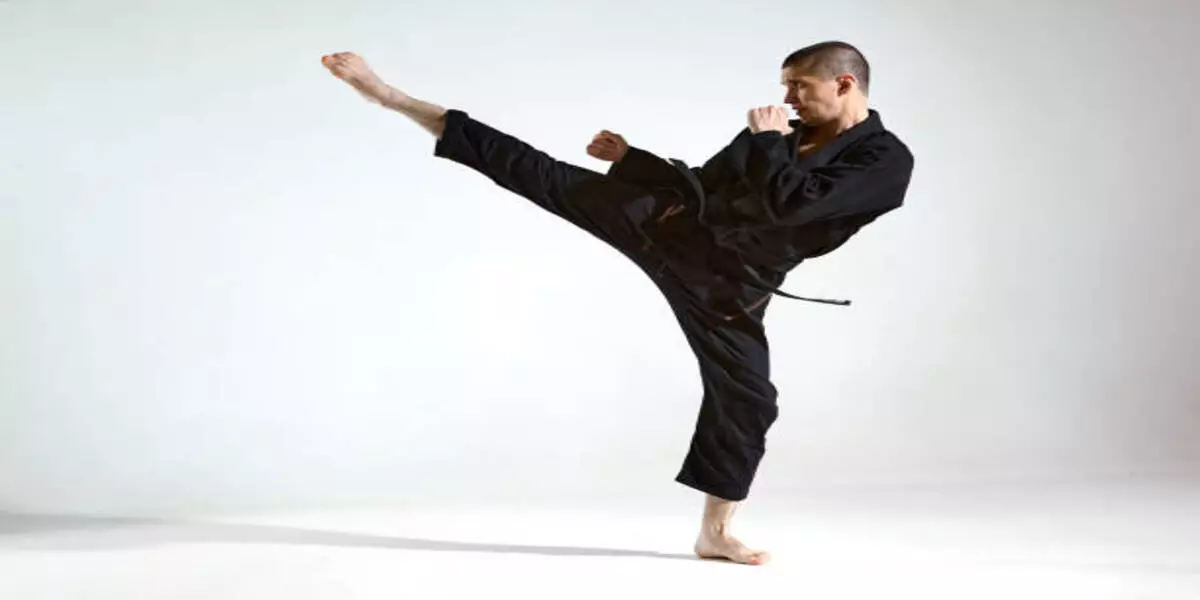
Renowned for its captivating acrobatics and striking techniques, Shaolin Kung Fu encompasses a vast array of physical and mental exercises.
Derived from the martial arts tradition of the Shaolin Temple, this discipline combines combat training, meditation, and spiritual development.
Practicing Shaolin Kung Fu enhances strength, flexibility, agility, and endurance while fostering mental clarity and discipline.
Procedure
- Find a Qualified Instructor: Seek out a reputable Shaolin Kung Fu school or instructor in your area. Look for someone with a strong lineage and a good reputation for teaching traditional martial arts.
- Start with the Basics: In the beginning, you will learn fundamental techniques such as stances, basic strikes, and blocks. These are the building blocks of Shaolin Kung Fu and provide a solid foundation for more advanced techniques.
- Practice Regularly: Consistent practice is essential in martial arts. Attend classes regularly and practice what you learn at home. The more you practice, the better you’ll become.
- Learn Forms: Shaolin Kung Fu includes a wide variety of forms, which are choreographed sequences of movements. Forms help you develop balance, coordination, and fluidity in your movements. Start with basic forms and gradually progress to more complex ones as you gain experience.
- Conditioning: Martial arts training also involves physical conditioning. This includes strength training, flexibility exercises, and cardiovascular workouts to improve your overall fitness and martial arts performance.
- Sparring and Applications: As you advance, you’ll engage in controlled sparring and learn how to apply your techniques in practical self-defense situations. This is an important aspect of martial arts training.
- Meditation and Mindfulness: Many traditional martial arts, including Shaolin Kung Fu, emphasize the importance of mental discipline. Meditation and mindfulness practices are often incorporated to enhance focus, concentration, and inner peace.
- Respect and Discipline: Shaolin Kung Fu places a strong emphasis on respect for your instructor, fellow students, and the martial art itself. Discipline and humility are essential aspects of training.
- Patience and Perseverance: Progress in martial arts can be slow, and you may face challenges along the way. It’s important to be patient and persistent in your training.
- Seek Guidance: Always defer to your instructor’s expertise and guidance. They will correct your form, provide feedback, and help you advance in your practice.
Bagua Zhang
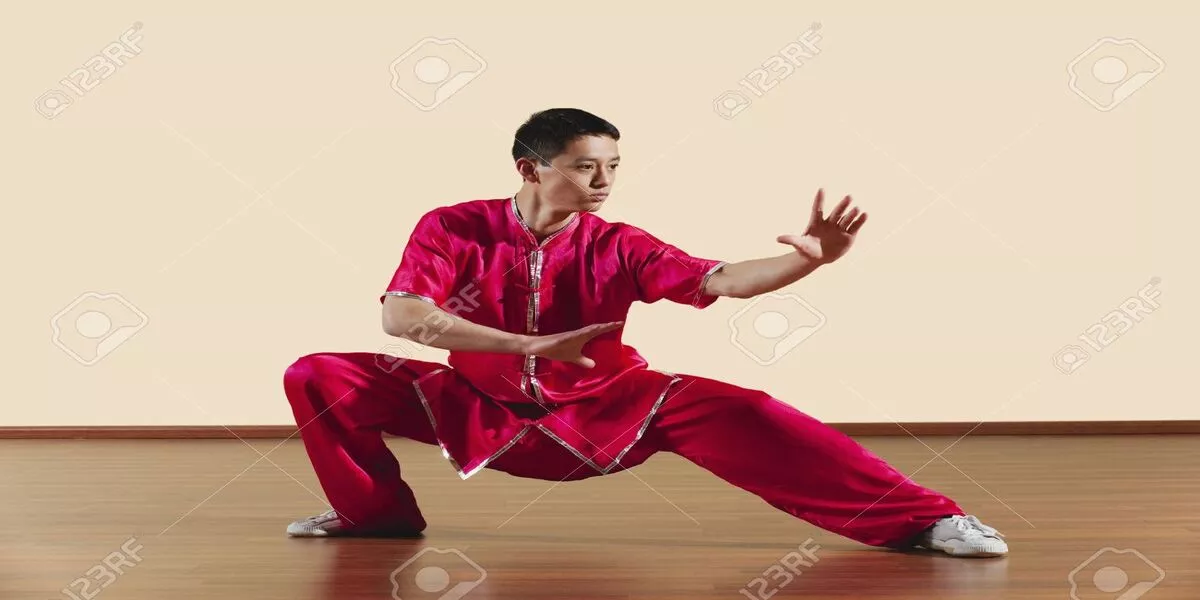
Bagua Zhang, also known as Eight Trigram Palm, is a distinctive martial art originating from ancient Chinese philosophy.
This practice incorporates circular walking patterns along with intricate hand movements. By synchronizing footwork and palm techniques, Bagua Zhang practitioners cultivate whole-body coordination, balance, and internal energy circulation.
Additionally, this exercise promotes cardiovascular fitness, enhances joint mobility, and sharpens cognitive function.
Procedure
- Find a Qualified Instructor: Bagua Zhang is best learned under the guidance of an experienced instructor. Look for a reputable martial arts school or teacher in your area who specializes in Bagua Zhang.
- Warm-Up and Stretch: Like any physical activity, begin with a proper warm-up and stretching routine to prevent injuries and prepare your body for training.
- Learn the Basic Stances: Bagua Zhang has various stances, but the most fundamental is the horse stance (Ma Bu). The horse stance helps develop balance, leg strength, and stability.
- Practice Circle Walking: Circle walking is a core element of Bagua Zhang. The practitioner moves in a circular pattern, often while maintaining a specific posture and palm position. This circular footwork helps develop agility, balance, and the ability to change directions quickly.
- Study the Palm Techniques: Bagua Zhang includes a wide range of palm techniques, each with specific applications. Some common palm techniques include:
- Single Palm Change (Dan Zhang)
- Double Palm Change (Shuang Zhang)
- Dragon Palm (Long Zhang)
- Phoenix Eye Fist (Feng Yan Quan)
- Snake Palm (She Zhang)
Your instructor will teach you these techniques and explain their uses.
- Develop Internal Power: Bagua Zhang places a strong emphasis on internal power, which includes cultivating Qi (energy) and practicing relaxed yet focused movements. You’ll learn to connect your breath, mind, and body for increased effectiveness.
- Explore Applications: Bagua Zhang techniques are not just for show; they have practical self-defense applications. Your instructor will teach you how to use these techniques in real-life situations.
- Understand the Eight Palm Changes: Bagua Zhang often incorporates eight fundamental palm changes, each associated with a trigram from the I Ching. These are the foundational techniques of Bagua Zhang and are essential for any practitioner.
- Practice Regularly: Consistent practice is crucial for improving your skills in Bagua Zhang. Train diligently and refine your techniques over time.
- Be Patient and Respectful: Learning Bagua Zhang is a journey that takes time and dedication. Show respect to your instructor, fellow students, and the art itself.
Xing Yi Quan
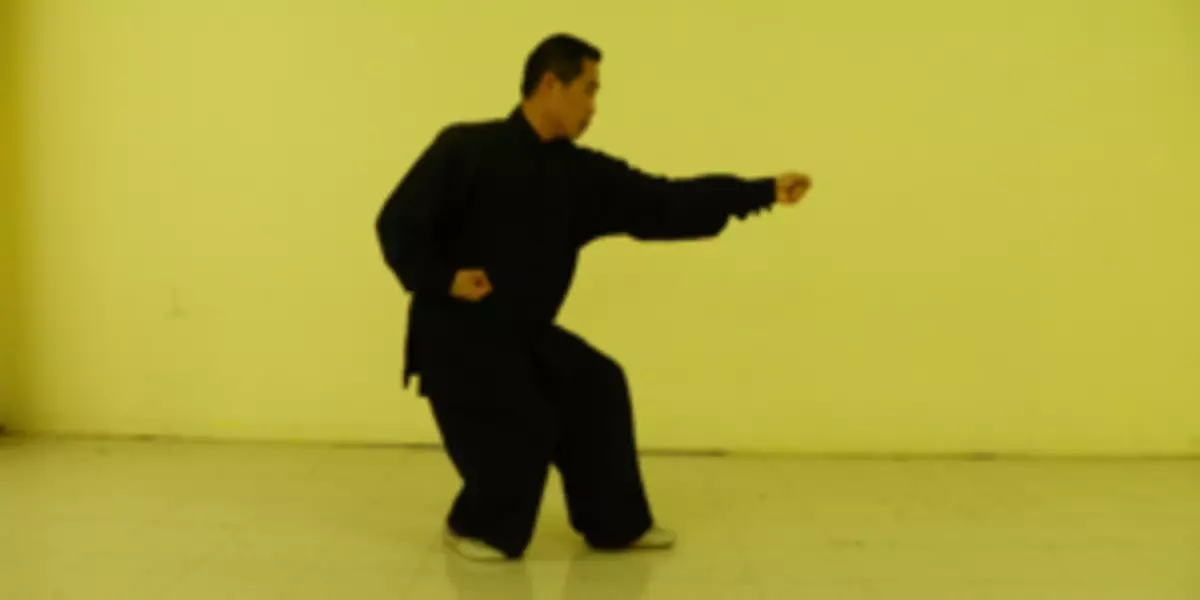
Xing Yi Quan, an internal martial art characterized by explosive power and directness, emphasizes simplicity and effectiveness.
This practice harnesses the five elemental energies—metal, wood, water, fire, and earth—to cultivate strength, speed, and agility.
Xing Yi Quan’s movements mimic the combat techniques of various animals, instilling practitioners with the attributes of these creatures.
Regular practice of Xing Yi Quan can enhance physical conditioning, cultivate mental focus, and foster emotional balance.
Procedure
- Find a Qualified Instructor: The first step in learning Xing Yi Quan is to find a qualified instructor who has experience in teaching this martial art. Look for a reputable martial arts school or instructor with a background in Xing Yi Quan.
- Warm-Up and Stretching: Like any physical activity, it’s essential to warm up and stretch before starting your Xing Yi Quan practice. This helps prevent injuries and prepares your body for training.
- Stance Work: Xing Yi Quan starts with a strong foundation in stance work. Some fundamental stances in Xing Yi Quan include the San Ti Shi (Three Body Posture) and Wu Xing Bu (Five Elements Stance). Your instructor will teach you how to assume and maintain these stances correctly.
- The Five Elements: Xing Yi Quan is based on the concept of the Five Elements, which are Metal, Water, Wood, Fire, and Earth. Each element corresponds to specific techniques and movements. You will learn various techniques associated with these elements, such as striking, kicking, and blocking.
- Practice the Five Fists: Xing Yi Quan emphasizes five primary fists or techniques, each associated with one of the Five Elements. These are:
- Pi Quan (Splitting Fist, Metal)
- Zuan Quan (Drilling Fist, Water)
- Beng Quan (Crushing Fist, Wood)
- Pao Quan (Pounding Fist, Fire)
- Heng Quan (Crossing Fist, Earth) You will practice and perfect these techniques to develop power and precision.
- Applications and Partner Drills: Xing Yi Quan includes partner drills and applications to help you understand how to use the techniques in real combat situations. You’ll practice various applications, counters, and sparring techniques with a partner.
- Forms and Sequences: Xing Yi Quan has a series of traditional forms or sequences, such as the Five Elements Form (Wu Xing Quan) and Twelve Animals Form (Shi Er Xing). These forms help you integrate the techniques and movements you’ve learned into a flowing and expressive martial art.
- Regular Practice: Consistent practice is crucial for mastering Xing Yi Quan. Practice the stances, techniques, and forms regularly to develop your skills, strength, and flexibility.
- Mindfulness and Intent: Xing Yi Quan also emphasizes the use of intention (Yi) and mental focus. Pay attention to the martial intent behind each movement and develop your ability to concentrate and direct your energy effectively.
- Self-Defense and Sparring: As you advance in your Xing Yi Quan training, you’ll learn self-defense techniques and engage in controlled sparring sessions to apply what you’ve learned in realistic situations.
Liu Zi Jue
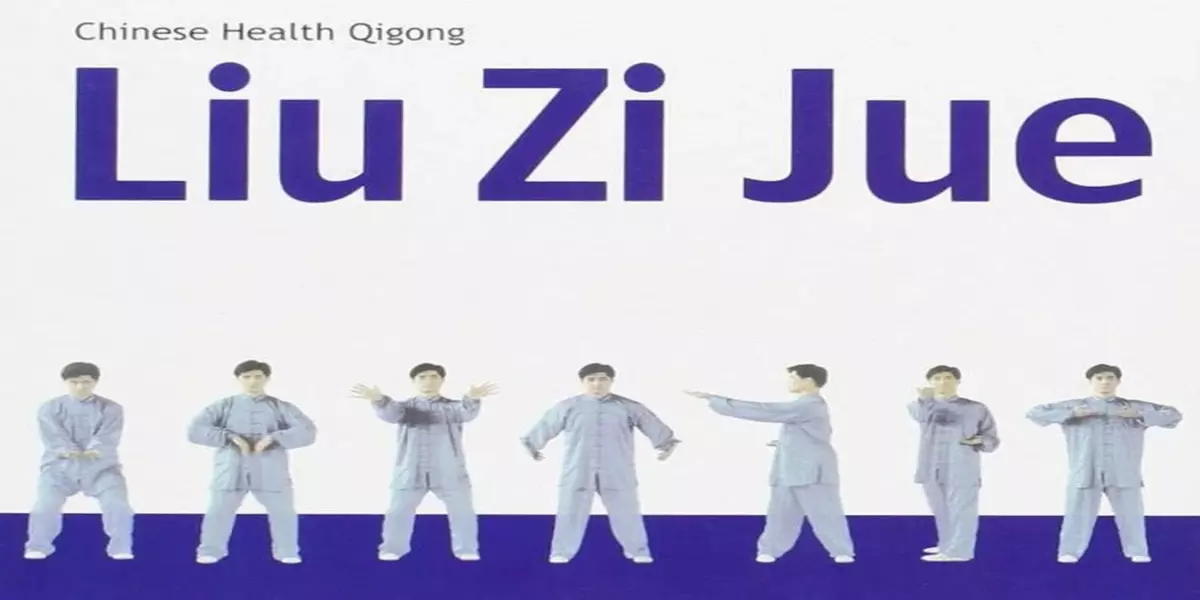
Liu Zi Jue, meaning “Six Healing Sounds,” is an ancient Chinese exercise focusing on the breath and vocalization.
This practice involves performing six specific sounds that correspond to different internal organs. By combining controlled breathing with sound vibrations, Liu Zi Jue aims to harmonize the organs, release stagnant energy, and promote overall health.
Regular practice of this exercise can improve respiratory function, enhance digestion, and strengthen the mind-body connection.
Procedure
1. Stand or Sit Comfortably:
- Find a quiet and peaceful place to practice where you won’t be disturbed.
- Stand with your feet shoulder-width apart or sit on a stable chair with your feet flat on the ground. Maintain a relaxed and straight posture with your head aligned with your spine.
2. Calm Your Mind:
- Take a few moments to relax and clear your mind. Breathe naturally and deeply to center yourself.
3. Focus on the Breath:
- Inhale slowly and deeply through your nose, drawing the breath into your lower abdomen (lower Dantian). Imagine the breath filling your entire body with fresh energy.
4. The Six Healing Sounds and Movements:
- As you exhale, make one of the six healing sounds while performing the associated hand movements. Each sound corresponds to a specific organ and is believed to have healing properties:
a. Xu (Shee) – Sound for the Liver – As you exhale, say “Xu” while extending your arms straight out in front of you, palms down.
b. He (Huh) – Sound for the Heart – Exhale with the sound “He” while raising both hands, fingers pointing upward, to chest level.
c. Hu (Hoo) – Sound for the Spleen – Exhale with the sound “Hu” while pushing both hands downward toward your lower abdomen.
d. Si (Sss) – Sound for the Lungs – Exhale with the sound “Si” while turning your upper body to the left and extending your left arm out in front, palm down.
e. Chui (Chway) – Sound for the Kidneys – Exhale with the sound “Chui” while turning your upper body to the right and extending your right arm out in front, palm down.
f. Xi (Shee) – Sound for Triple Burner (Sanjiao) – Exhale with the sound “Xi” while sweeping your arms down and back to your sides.
5. Repeat:
- Repeat the six healing sounds and movements sequence for several cycles, as many times as you feel comfortable. Try to synchronize your breath with the movements.
6. Reflect and Relax:
- After completing the sequence, stand or sit quietly for a moment to reflect on the practice and relax.
7. Gradual Progress:
- Liu Zi Jue can be learned in a formal class or from an experienced practitioner to ensure proper technique and understanding. It’s essential to start slowly and gradually increase the duration and intensity of your practice.
Conclusion
These lesser-known Chinese exercises offer a myriad of benefits for individuals seeking to improve their physical and mental well-being.
Whether you are drawn to the gentle flowing movements of Tai Chi, the meditative practices of Qigong, the disciplined training of Shaolin Kung Fu, the circular footwork of Bagua Zhang, the explosive power of Xing Yi Quan, or the harmonizing sounds of Liu Zi Jue, incorporating these exercises into your routine can yield transformative results.
Embrace the richness of Chinese culture and embark on a journey to enhance your holistic health through these renowned and powerful practices.



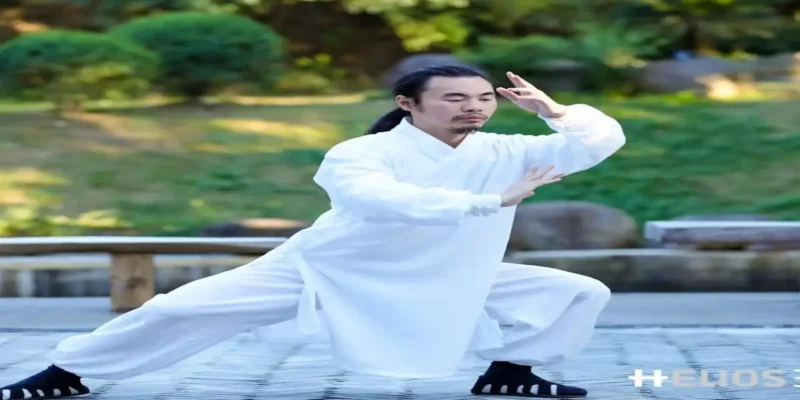

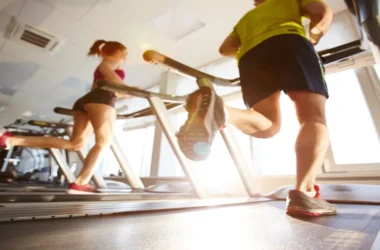

Simple Exercises to keep the body flexible, & pain-free thru out all stages of Our Lifetime
Liked knowledgeable.
Where to contact for study of these exercise.
Interested in LIU ZI JUE.
Enlighten.
How I will get these excersise
I have enjoyed the reels that I have seen so far with the Chinese medicine I tried the acupuncture with the side of the arm which relieves the back and hip pain and it’s wonderful it really stopped the pain thank you
Interested in learning more, please forward as much information as you feel comfortable with sharing!
Thank You In Advance…
I love Chinese exercises thank you
I’m going to do a taichi , in the park with my radio music player
How can I learn more about these exercise.
Age 68 Looking for any info on joint pain flexibility Nutrition and excercise.
The chineese are consistant, they are not all show like western culture. Since they are done natural, anyone who has minimum physical skills, can perform and practice, these exercises.
Erectile dysfunction (ED) is a common condition affecting a significant numbwr off men worldwide.
While Viagra has been a widely prescribed medication for
ED, some individuals may seek lternative treatment options.
Thiss article aims to explode variolus alternatives to Viagra for the treatment of
ED. The article will discuss lifestyle changes, natural supplements, psychological therapies,
vacuum devices, penile implants, hormone replacement therapy, acupuncture, aand traditional Chinese medicine
as potential treatment options. By examining the effectiveness and
ssfety of these alternatives, individuals with ED can make informed decisions about their treaztment
choices. It is important to note that consulting with a healthcare provider is
ctucial to ensure appropriate and personalized
treatment plans. Understanding the available altesrnatives to Viagra can provide valuable insights and options for individuals sedeking effective
and suitable treatment for ED.
We do not have practitioners of these arts in Kolkata and would appreciate if you provide instructors in your various consular offices in order to learn and benefit from these ancient practices.